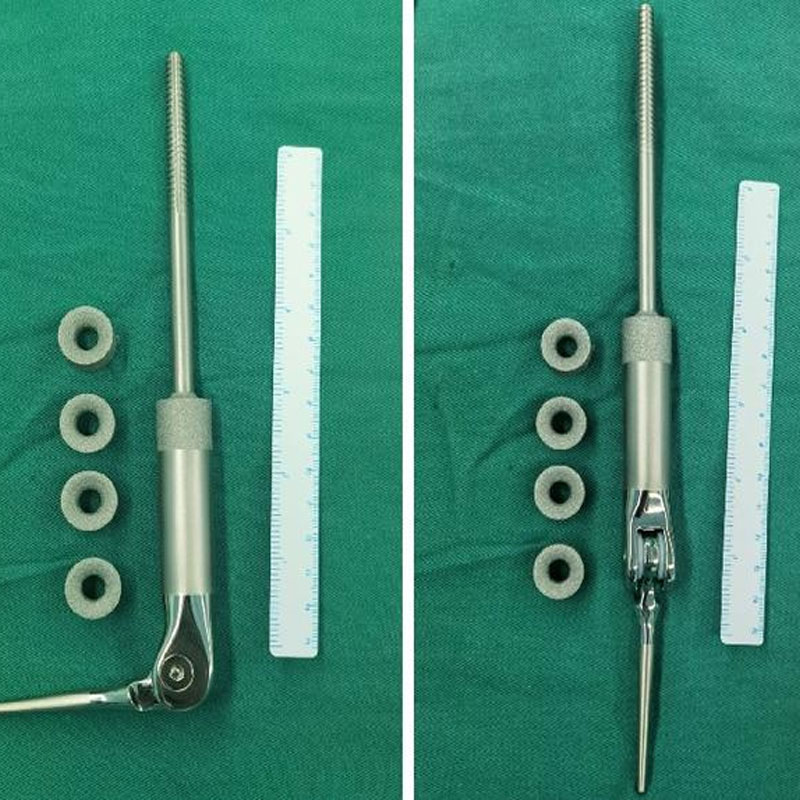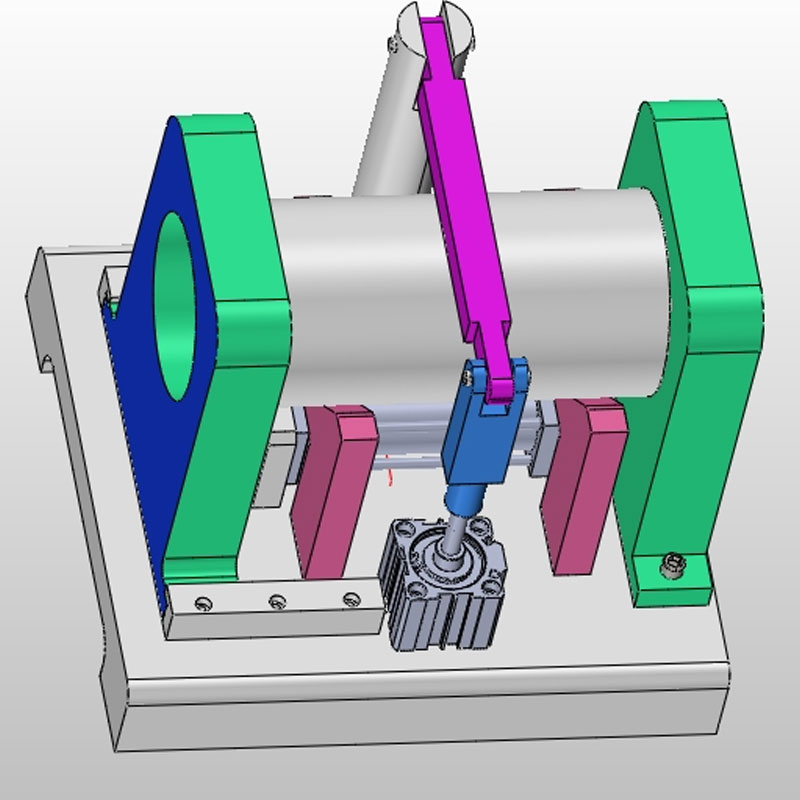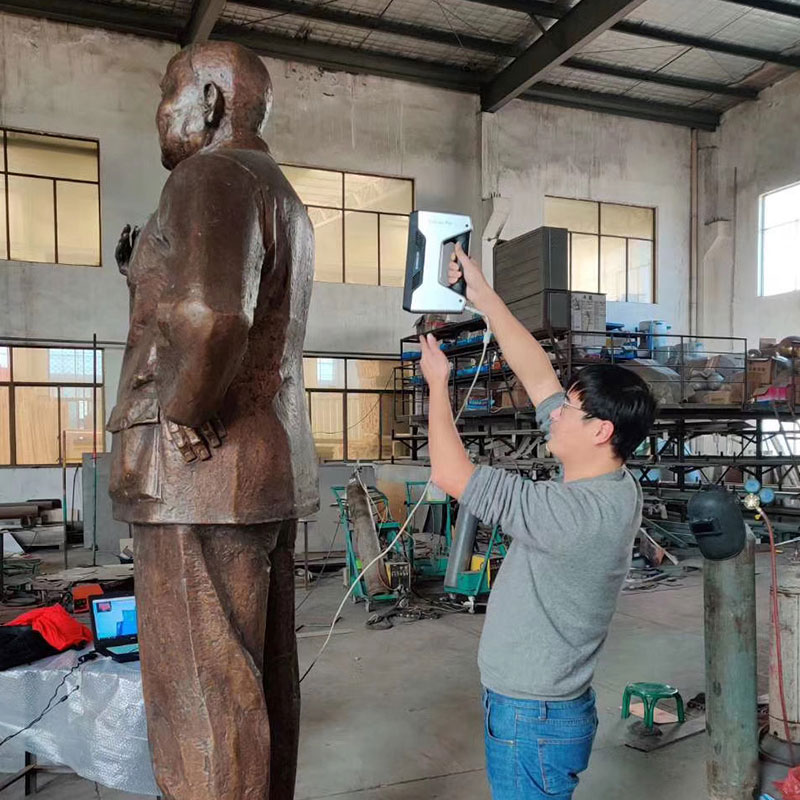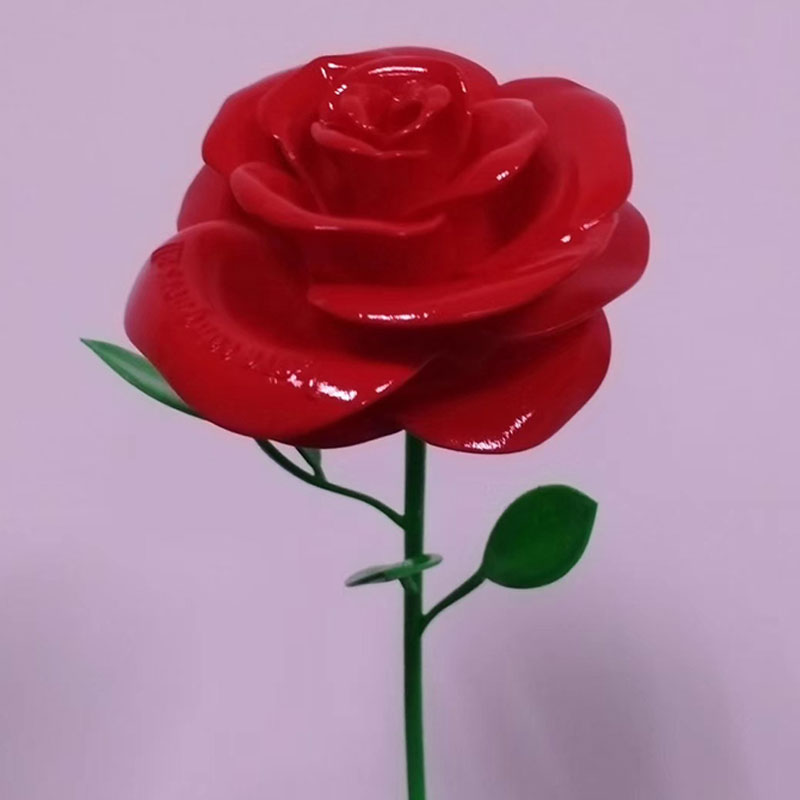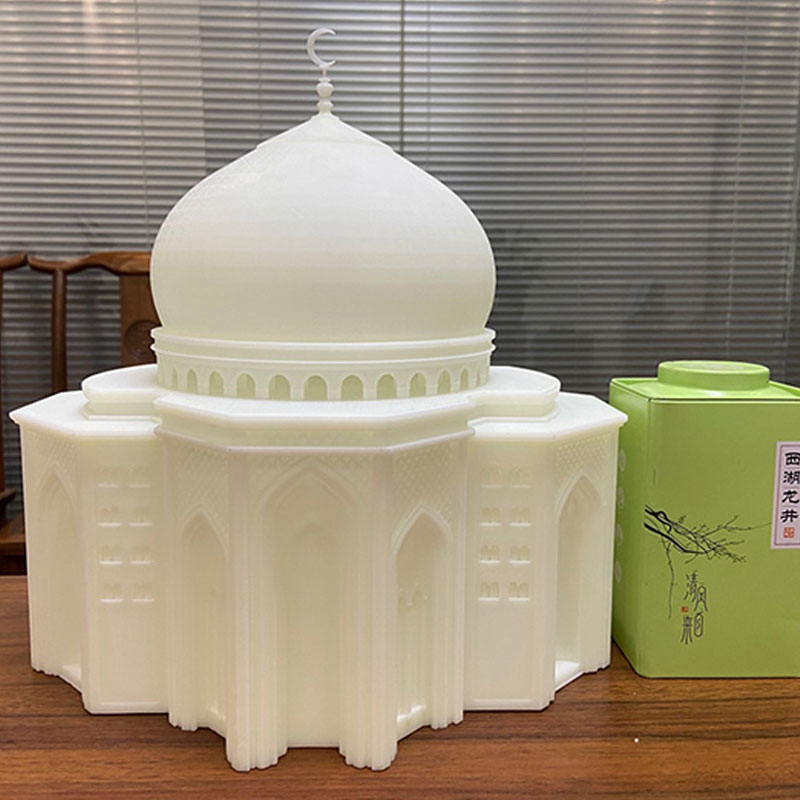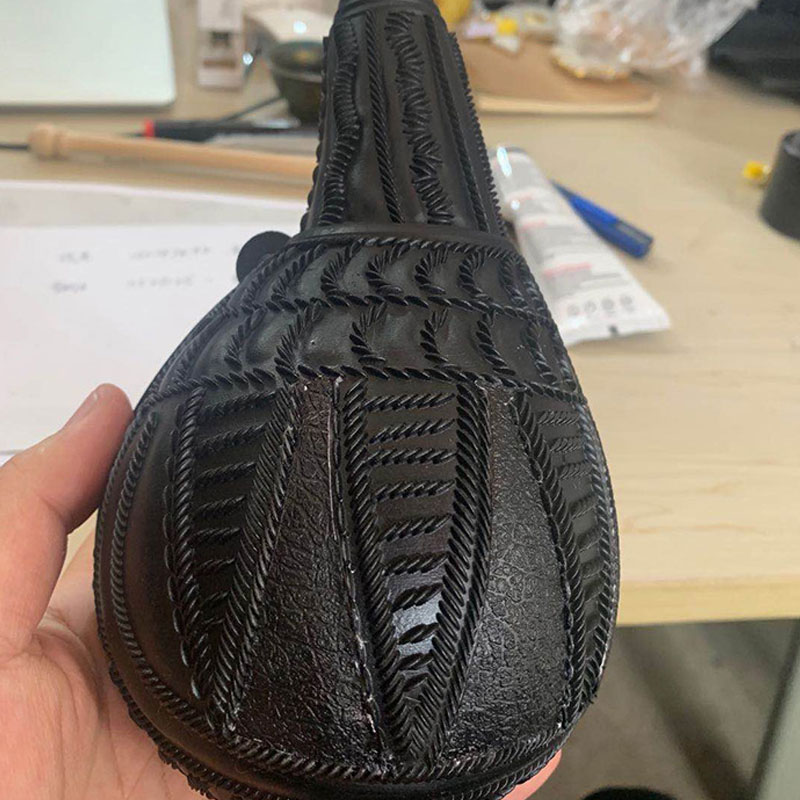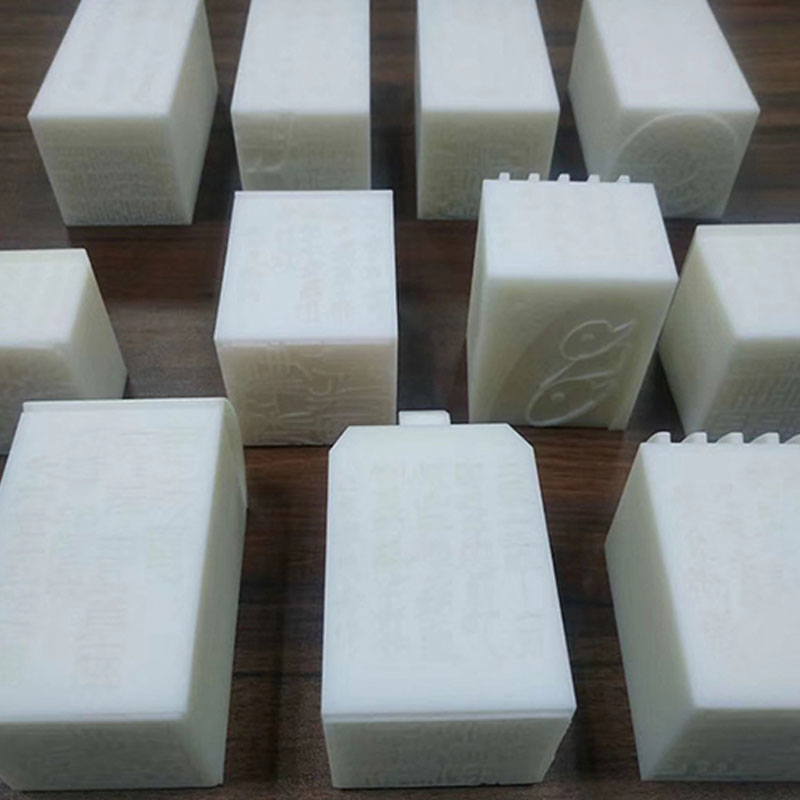Fully Integrated Elbow
- – Material: Nickel-Titanium Alloy
- – Accuracy: 0.2mm
- – Process: Metal 3D Printing
- – Finlishing: Custom
- – Process: SLM 3D Printing
- – Easy to clean and maintain
- – High brightness and good appearance
- – Excellent quality and toughness
- – Great performance and durability
The fabrication of 3D printed products is based on the design files. There are some details and features that always need to be taken into account when designing a 3D printing part, but the best result varies depending on the different 3D printing services.Wonder Tech have a wide range of process and materials to choose from, each with its own benefits and applications.
Specifications
Parameter
Material
Making medical implants is a relatively difficult job, involving knowledge of multiple disciplines such as medicine, biology, and materials science. Several issues need to be addressed:
- Biocompatibility, the implant should avoid negative impact on the surrounding tissue, otherwise the immune system will reject it as a foreign body. Elements such as toxicology of materials, implant surface treatment based on immune system response, etc. need to be considered.
- Mechanical design. From a mechanical point of view, the design of implants is very difficult. The biomechanics of various parts of the body are very complex. Factors such as the content of collagen and the orientation of the tissue sheet structure will affect the basic mechanical properties of the part. Things like joints can be cycled countless times over decades with little to no wear. It is very difficult to reproduce these biomechanical properties synthetically.
- Cost control. The geometry of bones and tissues varies from person to person, and the degree of damage to the bones and other parts of patients also varies. Implants must therefore be custom-made, which can lead to relatively high manufacturing costs.
With the continuous development of 3D printing technology, many medical institutions have adopted it as one of the ideal processes for making implants. 3D printing has the following advantages in implant fabrication:
- Design freedom, 3D printing has very small molding restrictions, and the algorithm can give full play to the role of algorithms in design, set reasonable parameters, and perform generative design, complex internal structures and small structural changes can be realized. This results in ideal mechanical properties for the implant.
- The cost is lower, 3D printing does not require additional production tools, and there is very little wasted material. When making implants in small batches, the unit cost is the lowest.
At present, 3D printed medical implants are mostly bone implants and scaffolds. Among them, the bone implants are mostly joints. With the increase of age or long-term labor, some people’s joints will become necrotic, and artificial bones need to be replaced by surgery. Through 3D scanning, it is possible to 3D print a joint that is almost exactly the same as the original, which not only improves the success rate of the operation, but also allows the implant and surrounding tissues to better integrate.
Nickel-titanium alloy for arterial stents. Nickel-titanium alloy has shape-retaining memory properties, which are very suitable for making arterial stents for the treatment of severe arterial disease (PAD), and can already be 3D printed.
PAD is caused by fatty deposits in the arteries of the legs or arms, resulting in reduced blood flow to the extremities, which can be improved by placing stents. The braces placed need to have a certain ability to deform, while the limbs need to be able to maintain their shape when moving.
The 3D-printed nickel-titanium alloy stents have complex mesh geometries that allow them to expand and contract more efficiently than traditional stents.
Printing Require
- Customized production
- Fully integrated with the prosthetic arm
- Biocompatibility
Printing Plan
- Personalization and complex structure customization
- Material: Titanium Alloy
Application Result
- Short production cycle, parts processing can be completed within 15 hours
- Customized design, good match between products and patients
- Biocompatibility, surface quality and mechanical properties meet the standard of use
World-Class 3D Printed Prosthetic Arm Services
Wonder Tech is dedicated to providing game-changing solutions- high-performance solutions and faster 3D Printed Prosthetic Arm services with flexible designs.
We have brought nearly 20 years of materials and manufacturing expertise to every layer of your 3D products to help you in unlocking every dimension of 3D printing techniques.
3D Printing Technology And Material Table
At present, the commonly used 3D printing technologies include Multi Jet Fusion(MJF), Selected Laser Sintering(SLS), Stereolithography(SLA), Fused Deposition Modeling (FDM), and Direct metal laser sintering (DMLS).
| Cumulative Technology | Basic Material |
| Fused Deposition Modeling (FDM) | Thermoplastics, eutectic system metals, edible materials |
| Electronic Beam Freeform Fabrication (EBF) | Almost any alloy |
| Direct Metal Laser Sintering (DMLS) | Almost any alloy |
| Electron Beam Melting (EBM) | Titanium alloy |
| Selective Laser Melting (SLM) | Titanium alloy, cobalt chromium alloy, stainless steel, aluminum |
| Selective Heat Sintering (SHS) | Thermoplastic powder |
| Selective Laser Sintering (SLS) | Thermoplastic, metal powder, ceramic powder |
| Polypropylene (PP) | plaster |
| Laminated Object Manufacturing (LOM) | Paper, metal film, plastic film |
| Stereolithography (SLA) | Light hardening resin |
| Digital Light Processing (DLP) | Light hardening resin |
Our Quality Promise
Have an idea? have a napkin sketch? From proof of concept to functional tools for the manufacturing floor, 3-di.com has multiple 3D printing technologies at our disposal to help you bring your design to life. Contact us today!Send your files to reiceve a quote. Accepted file types: Hi-Res .stl, .sldprt. .step, .jpg, .pdfInspection reports included with every orderAccuracy up to 0.01mm, maximum size 1500mm100% visual inspection for every part Highly vetted 3D printing partnersMaterial certifications availableQuality guaranteed. If your parts aren’t made to spec, we’ll make it right.Over 100 machines running 24 hours a dayMore than 60 experienced masters
3D Printing Part Sizes
| FDM | 200 x 200 x 200 mm for desktop printers, up to 900 x 600 x 900 mm for industrial printers |
| SLA | 145 x 145 x 175 mm for desktop printers, up to 1500 x 750 x 500 mm for industrial printers |
| SLS | 300 x 300 x 300 mm, up to 750 x 550 x 550 mm |
| DMLS/SLM | 250 x 150 x 150 mm, up to 500 x 280 x 360 mm |
| MJF | 380 x 285 x 380 mm |
Dimensional Accuracy In 3D Printing
The dimensional accuracy refers to how accurate the size and form of the printed part are compared to that in the CAD design. Factors that affect dimensional accuracy include material quality, equipment, post-processing, and more. Dimensional tolerance, shrinkage, and support requirements are three key elements to measuring dimensional accuracy. Below are the dimensional tolerance of different 3D processes.
| FDM dimensional tolerance | prototyping (desktop):±0.5% (lower limit:±0.5 mm), industrial:±0.15% (lower limit:±0.2 mm) |
| SLA dimensional tolerance | prototyping (desktop):±0.5% (lower limit:±0.10 mm) industrial:±0.15% (lower limit:±0.01 mm) |
| SLS/MJF dimensional tolerance | ±0.3% (lower limit:±0.3 mm) |
Layer Height In 3D Printing
Layer height is a measurement of the amount of material extruded by the printer’s nozzle for each layer of your part. It is measured in microns or millimeters. The selection of layer height is important for some 3D printing technologies, such as SLA and FDM. Below are the typically applied layer height for different processes.
- – FDM: 50 – 400 μm
- – SLA: 25 – 100 μm
- – SLS: 80 – 120 μm
- – MJF: 80 μm
- – DMLS/SLM: 30 – 50 μm
3D printing and prototyping have advanced development in recent years. With these improvements, metal 3D printing has become a possibility. Metal 3D printing is used in a variety of sectors. Companies that use metal 3D printing are discovering that 3D printing complicated metal parts in low quantities is considerably more cost-effective than traditional methods of production. Metal 3D printed items are cheaper and have a wider range of material alternatives. Aluminum is a popular metal for 3D printing since it is both sturdy and lightweight. Steel is another extensively used material that is perfect for industrial applications due to its strength, good polish, and temperature tolerance. Metal 3D printing is utilized in a wide range of sectors for a variety of purposes. Functional prototypes, end-use parts, Jigs, tooling, and fixtures are some of the applications.
| Metals | Applications |
|---|---|
| Stainless steel | Utensils, cookware, and other items that could ultimately come into contact with water |
| Bronze | Vases and other fixtures |
| Gold | Rings, earrings, bracelets, and necklaces |
| Nickel | Coins |
| Aluminum | Thin metal products |
| Titanium | Strong, solid fixtures |
3D Printing Plastic Materials Guide
Wonder Tech provides plastic 3D printing services with constantly high efficiency and quick turnaround. Advanced 3D printers and optimal materials allow us to ensure both cheap prices and premium quality.
| Plastics | Features | Applications |
|---|---|---|
| ABS | Tough, strong, durable, heat-resistant, cost-effective, flexible, reusable, not biodegradable | Car bodies, appliances, and mobile phone cases |
| PLA | Easy to work with, environmentally friendly, biodegradable, available in resin and filament with a variety of colors | Food packaging, biodegradable medical devices and implants |
| PVA | Water-soluble | Often use to create a support structure for portions of a product that may warp or collapse |
| PP | Affordable, chemical resistant, flammable, and degrades with UV light | Household containers, lab equipment, and textiles |
| Nylon/PA | Strong, lightweight, durable, heat and impact-resistant, but not resistant to strong acids and bases | Applications that require high mechanical properties and functional prototypes |
| PEI | Can withstand high heat | Injection mold tools and heat-resistant components |
| PC | Heat resistant up to 135 °C, durable, impact and shatter resistant, moderately flexible, transparent, electrically non-conductive | Prototype windows and other clear products |
| PMMA/Acrylic | Good impact strength, comparable clarity, and UV absorption properties | Automobile headlights, commercial aquariums and other alternatives to glass |
| CPVC | High heat distortion temperature, chemical inertness, dielectric, and flame and smoke properties | Chemical processing, power generation, semiconductor, wastewater treatment |
| PEEK | Wear-resistant, good weight-to-strength ratio, high thermomechanical properties | Medical custom-made implants, devices, aerospace and automotive parts |
| PETG | High impact resistance, excellent chemical and moisture resistance | Compliant mechanisms, water bottles, electronic enclosures |
| TPU | Flexible, abrasion-resistant, resistant to impacts and many chemicals | Sporting goods, aerospace and automotive |
| PETP/Ertalyte | High dimensional stability, mechanical strength, low moisture absorption, physiologically inert | Thin films, containers for liquid drinks |

